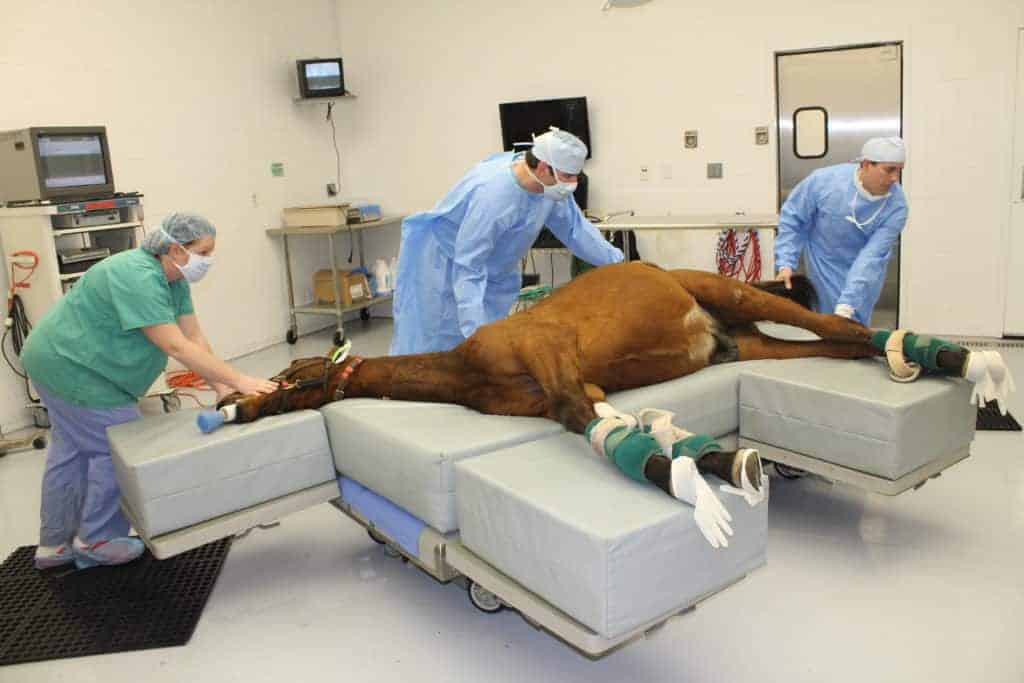
What Happens When a Horse Undergoes General Anesthesia?
A veterinary anesthesiologist describes the steps he takes when caring for horses before, during, and after surgery.

A veterinary anesthesiologist describes the steps he takes when caring for horses before, during, and after surgery.

Horses waking up from general anesthesia can injure themselves trying to stand. But those receiving epidural opioids beforehand generally make fewer efforts to stand and do so more calmly.

An expert lists four broad PT categories and describes the many techniques within each that can help horses recover from injury and improve their performance.

With a custom-made splint holding the bent knee in place and partially supporting the horse’s weight, equine surgeons can now perform needle arthroscopy in standing, sedated horses.

Learn about this therapy designed to provide support and stability to muscles and joints without restricting their range of motion.

The body delivers blood to help tendons heal. Power Doppler can identify when blood is present in horses’ injuries that veterinarians might otherwise believe to have recovered.

Sometimes rest is the best recipe for recovery for an injured horse. Learn about the science of healing, aggressive vs. conservative treatment, and exercise rehabilitation.

Standing surgeries on sedated horses can provide good, if not better, results than equivalent surgeries on fully anesthetized horses, without the added costs and complications.

Horses undergoing general anesthesia die about a thousand times more often than humans do, at a rate of around 1 to 1.5 deaths per 100 anesthetized horses. Here’s a look at why.

A veterinarian dispels 4 common rumors that often sway an owner’s decision to pursue surgery for a colicking horse.

Using the natural antimicrobial prophylactically offers another line of defense against incisional infection in horses undergoing colic surgery.

A veterinarian describes conventional and alternative therapies for helping tendons and ligaments heal.

While people might extol the virtues of various rehabilitation modalities, those testimonials rarely rely on the science surrounding the techniques.

Something on the X rays looks a bit off—is it significant or of no consequence? It depends on what you find.

Prevailing wisdom has been that Western disciplines are too physically demanding to allow athletes to return to work after arthroscopic stifle surgery. A study presented at the 2019 AAEP Convention found this isn’t necessarily the case.

While it can be unsettling to think about all the possible scenarios, planning before colic happens could save your horse’s life.
Stay on top of the most recent Horse Health news with
"*" indicates required fields